Camouflage & Markings – Curtiss P-40 Tomahawk in British & Commonwealth service
The arrival of long-awaited new tool P-40B kits from Bronco and Airfix will likely spin renewed interest in the type. The attached collection of profiles demonstrates units and camouflages representative of the Tomahawk's service with the RAF. All profiles courtesy of Mr. Rick Kent.
With its twin nose guns, elongated cowling and big pointed spinner, the early variant of the Curtiss P-40 was a very important fighter type for the Allies in the early part of the war. Many were destroyed on the ground at Pearl Harbor in December 1941; it did well with the AVG in China and Burma.
The P-40 was also used extensively by the Royal Air Force. Similarly to its contemporary P-39 Airacobra, it was declared unsuited for RAF fighter operations against the Luftwaffe at the Channel front. Its lack of a two-speed supercharger made it inferior to Luftwaffe fighters such as the Messerschmitt Bf 109 or the Focke-Wulf Fw 190 in high-altitude combat. But starting from February 1941 the Tomahawks found excessive use at the RAF's Army Cooperation Command. Replacing the thoroughly obsolete Lysanders, the Tomahawk was instrumental in developing high speed, low level, tactical reconnaissance for the British Army. They were themselves replaced by the Mustang I in mid-1942.
The P-40 was also an effective fighter available to the RAF in the early months of the Desert War. The performance at high altitudes was not as important in this theatre, where it was used as an air superiority fighter, bomber escort and fighter-bomber.
The Tomahawk was also a small but important part of the Soviet arsenal in 1942, being one of the precious few types available to the VVS at the time that could take on the Messerschmitt Bf 109.
Although it gained a postwar reputation as a mediocre design, recent research including scrutiny of the records of individual Allied squadrons indicates that this was not the case: the P-40 performed surprisingly well as an air superiority fighter, at times suffering severe losses but also taking a heavy toll of enemy aircraft. The P-40 was very agile at low and medium altitudes, with excellent dive acceleration and dive speed. It was also one of the tightest-turning early monoplane designs of the war, which enabled a skilled pilot to out-turn most opponents it faced in North Africa and the Russian Front. Operational range was good by early war standards, and was almost double that of the Supermarine Spitfire or Messerschmitt Bf 109.
The highest-scoring P-40 ace, Clive Caldwell (RAAF), who claimed 22 of his 28 1/2 kills in the type, said that the P-40 had "almost no vices", although "it was a little difficult to control in terminal velocity". Caldwell added that the P-40 was "faster downhill than almost any other aeroplane with a propeller." and that it "would take a tremendous amount of punishment, violent aerobatics as well as enemy action."
The earliest Curtiss production variant, designated only P-40 had only four guns and lacked armor plate or self-sealing tanks, but the British pressed these into service into North Africa anyway as Tomahawk Is. The P-40B (Tomahawk IIa) had armor behind the pilot, an armored windscreen and partially protected fuel tanks, the P-40C (Tomahawk IIb) had a fully protected fuel system and became heavier, reducing the top speed to under 350 mph. The performance was somewhat lacking throughout the lifespan of the P-40, and the Soviets reportedly stripped the wing guns from some of their Tomahawks to improve it.
There were a variety of differences between the British Commonwealth and US variants, (starting with the guns, .303 instead of .30 calibre) so that there is not actually an exact correlation between specific US variants (P-40B etc.) and British Commonwealth export versions (i.e. 'Tomahawk')
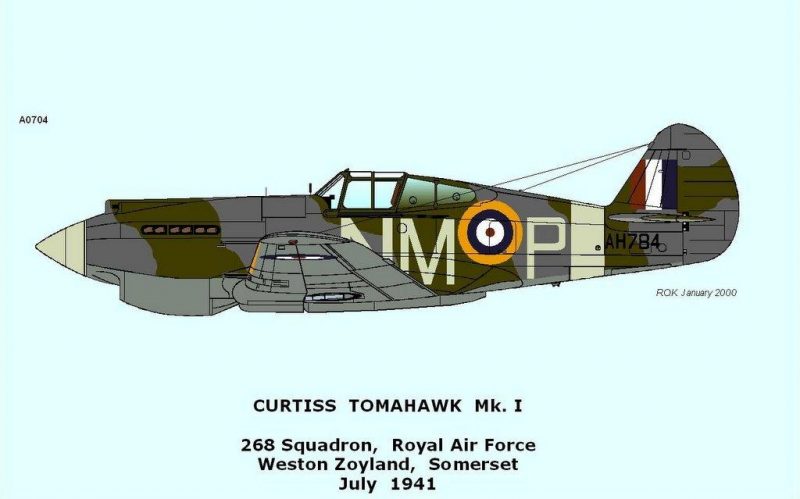
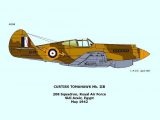
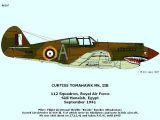
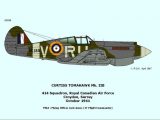
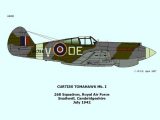
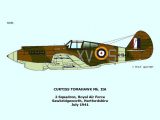
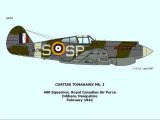
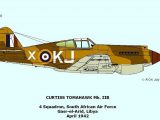
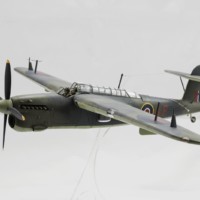

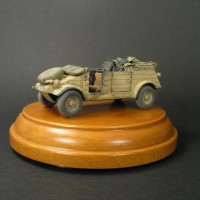
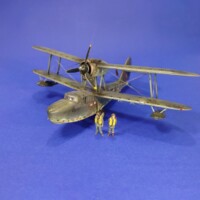
Thanks for posting these ,I like best the dessert scheme with the lightning flashes.
N.
I'm with Neil, that lightning flash is an attention getter. This is more info than I've seen in one place on RAF usage of the Tomahawk. Army Coop Command in the UK?
Well done, Mr. Kent, as always. Thank you.
Thanks for these. One bit of historical correction: there were no early P-40s in the Philippines. The 17th Pursuit Squadron received P-40Es in October-November 1941 to replace their P-35As. The tales of P-40Cs in the PI are stuff from the 50s. P-40Cs were indeed at Pearl Harbor.
Thanks for the correction, Tom, I have adjusted the text
Thanks for the reference photos and info. Love the P-40, and am thinking of making the P-40 my one WWII fighter to extend a collection of - so many variants, so many marking options, so many theaters, and so may different air forces using it!
I can only agree, in terms of the modelling variety the P-40 is an unbeatable subject...
You may recall Freduck Seitz posted a nice 1/32 Hasagawa version here in 2013.
Naturally meant Frederick -iPad behaving badly.
You better get on the horn and tell that one guy (serial AH942) that's he's goin' the wrong way!
Good reference material, thank you for sharing it.
Can't get enough of P-40's. I always thought that it got a bad rap. It was used through out the length of the war.
I agree Robert, the P 40 and the Wildcat held the line and broke the back of Japanese airpower in the southwest pacific. Great record in just about every other theatre of war too.
David, what somebody called our "foot in the door" fighters. I'd include the P-39, as well. Like the title of the Walter D. Edmonds book about the early days of WW II air in the Pacific- They Fought With What They Had. Recommended, if you can find it.
Wow... where do you start? The P-40 has to be one of the coolest subjects. I could do 20 and still not want to stop. I have 5 built... better get into some more. I'd do at least 2 or 3 of these above.
I'd do at least 2 or 3 of these above. 
Do I see another group build on the horizon?